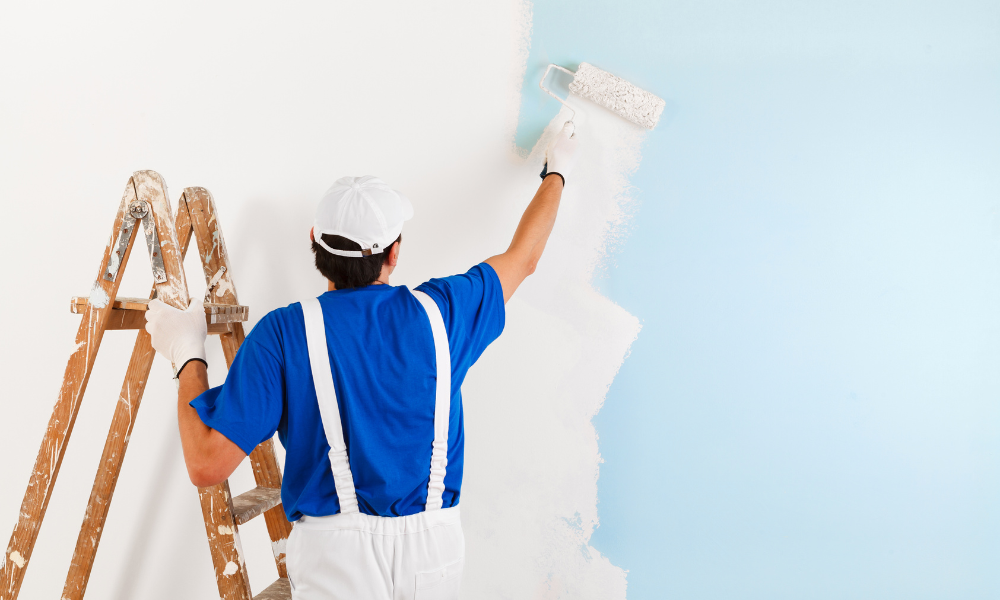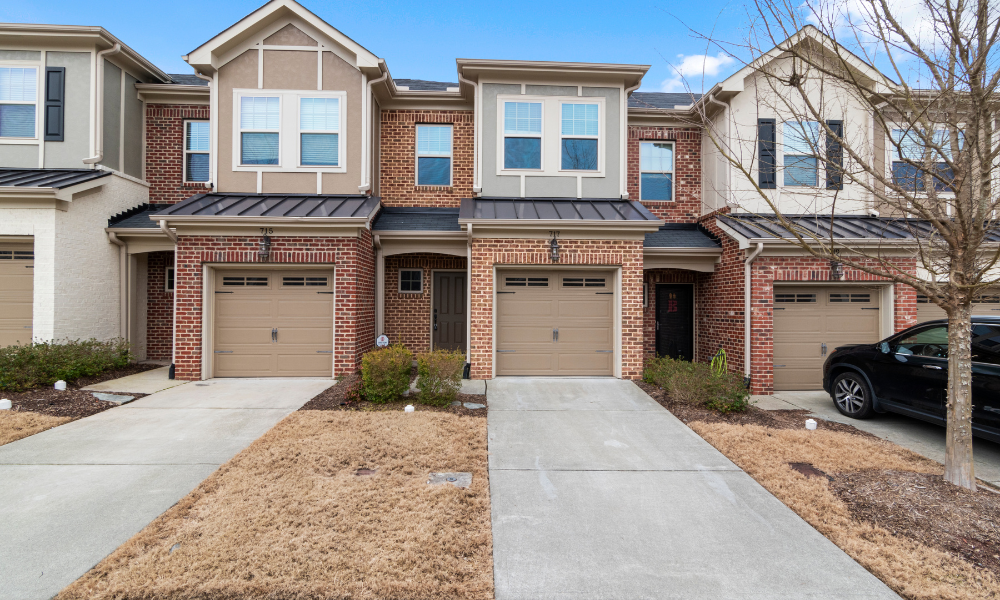How to Paint Floor Molding in Carpeted Rooms
Summary: Painting baseboards with carpet can be tricky due to the narrow gap between the trim and carpet. Consider whether the carpet or baseboards were installed first before painting. Three options include removing the carpet, peeling it back, or painting the baseboards in place. Each method has its challenges, so choose the one that fits your situation best or seek professional help to avoid damage.
Paint Floor Molding in Carpeted Rooms
Painting floor molding or baseboards can be challenging, especially when dealing with carpeted floors. Removing paint splatters from fabric takes time, and the narrow gap between the trim and carpet makes it tricky to use a shield. For a polished and professional look, correct execution is key. While a DIY approach is possible if you’re capable, seek professional help if unsure about the process.
What went in first, carpet or baseboards?
Having a shield to safeguard the flooring from paint splatters is crucial. Before you start painting, there are key aspects to consider. First, determine whether the baseboards or carpet were installed first, as this will influence your painting approach. The following will help you figure this out:
- Does the carpet goes all the way to the wall or under the baseboards?
- Does the carpet stop before the baseboards, leaving a gap at the edge of the carpet you can work with?
- Are baseboards directly on top of the floor without any gaps? In this case, it will be difficult to paint the baseboards since the carpet is already in place.
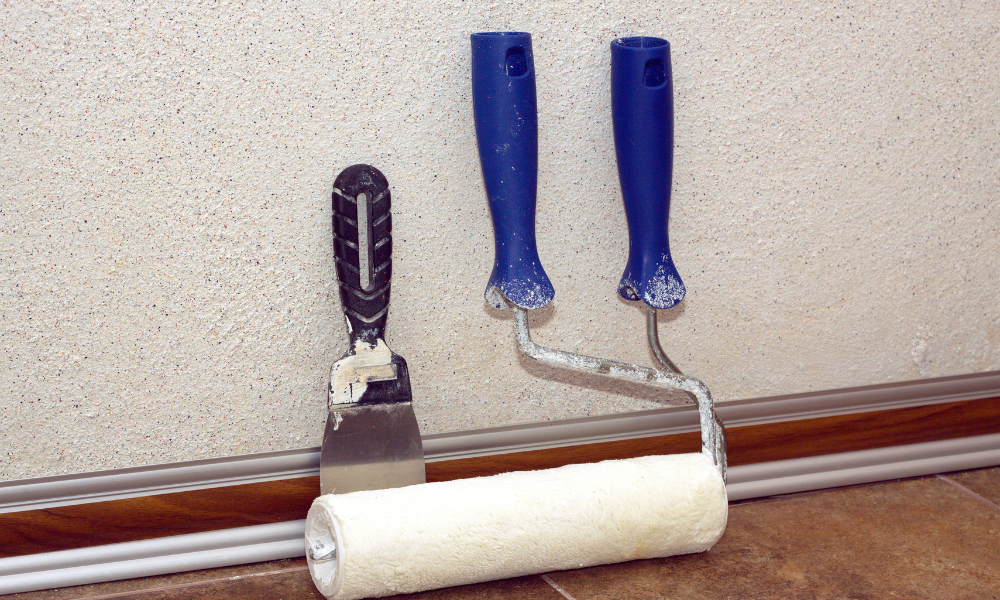
3 Options for Painting Baseboards with Carpet
When painting baseboards with that carpet already in place, consider these three options. Understanding your unique situation beforehand is key to avoiding any damage or paint mishaps.
1. Remove the carpet, paint the baseboards, and reinstall the carpet:
Carpet can be very difficult to work with as it can get in the way. Many people remove the baseboards when they need to paint them as it is easier than trying to paint them in place. However, this can be risky because when you detach the baseboards, you could damage them and the wall. If you do decide to paint the baseboards in place, it does require patience and attention to detail. If you have baseboards that run all the way to the floor without any gaps, then removal and reinstallation might be the best solution for you.
2. Peel the carpet back:
Since carpets are secured next to the wall or baseboard with a tack strip, you will need to remove the tiny nails that are attached to the backing of the carpet and peel the carpet back so you can paint the baseboards. You should only do this if you are an experienced installer, otherwise you may end up with a huge mess. Also, this process should only be done if the carpet is a small part of the footprint of the home.
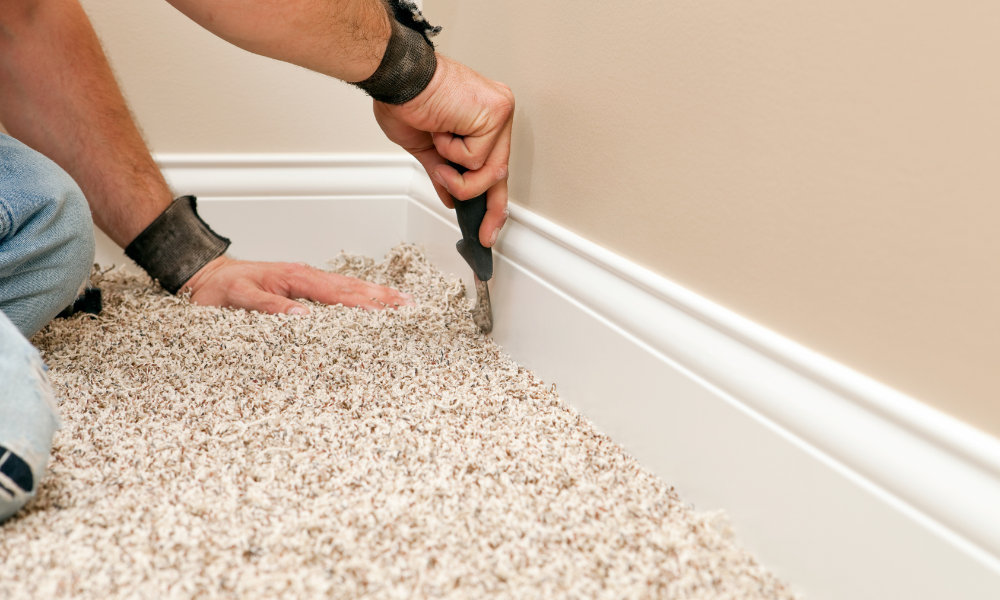
3. Paint the baseboards in place:
When baseboards are snugly installed without a gap at the bottom, painting in place becomes more challenging. This situation can be daunting as it may result in a messy paint job without the necessary space. Painting in place necessitates having a gap, which serves to shield the carpet and provide access to the baseboard for painting. Various methods can be employed to achieve this:
- Paint guide, paint shield, carpet shield
- Painter’s tape/masking tape
- Cereal box
Before painting baseboard trim with the carpet in place, you will need to get these supplies:
- Trim paint
- Paint brush
- Painter’s tape
- Cardboard
- Painter’s blanket
- Soap and water
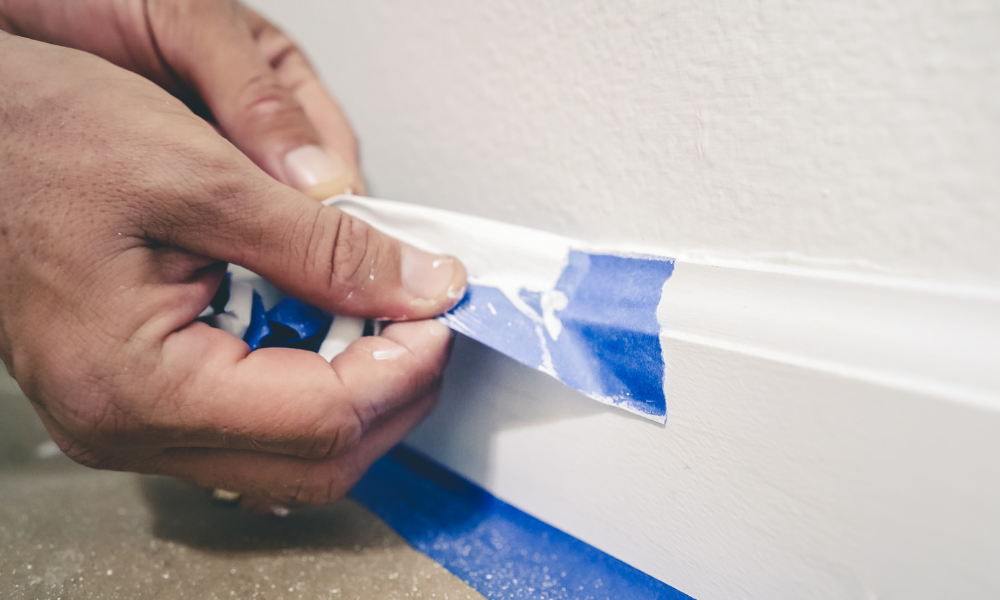
Make sure to follow these steps when painting the baseboards in place:
- First, make sure to protect the floor. Then add painter’s tape and cover the wall and carpet with cardboard or a painter’s blanket. If you are painting along the carpet, make sure to block off a small section to start with and do not try to do it all at once.
- Secondly, prepare the brush. Fill the brush with paint to no more than half of the bristles. Then, tap the brush against the bucket to remove loose paint.
- Thirdly, you should brush lengthwise then run back and forth removing paint as much as possible with each stroke. Make sure to wait for the paint to dry and then add more coats as needed.
- Finally, remove all materials and keep moving. By using a putty knife or an all-in-one tool, remove the painter’s tape, or any other materials touching the paint and baseboards and move on to a new section.
Keep in mind that there is not one right way to paint your baseboards as it relates to your specific case. You will need to figure out what works for your specific situation and stick to that process. If you are not sure how to paint the baseboards yourself, make sure to hire professionals. This will help ensure that you do not damage your floors, walls, or baseboards and prevent a huge mess. Professionals know how to do quality work that does not take a long time and they will make sure that they protect all surfaces well so that there is no splatter or damage.
Professional Painting Services
For quality residential and commercial painting services in Streamwood, IL, and nearby areas, contact NuEra Restoration and Remodeling today at (847) 217-1036. We provide 24/7 live phone support. Our technicians are IICRC certified, licensed, and insured, ensuring a lifetime satisfaction guarantee. Our skilled interior painters deliver quality work, backed by free estimates and a 100% satisfaction guarantee. We also assist with insurance claims processing.
Related Posts:
How to Remove Paint Fumes from Your Home
If you’ve recently painted your home, you’re likely aware that the residual paint fumes can…
Is it Possible to Paint a Brick House?
In recent years, homeowners have embraced several popular trends for brick houses, including exterior brick…
How to check for Water Leaks Behind Your Walls
Proper maintenance of your home is of utmost importance. It ensures the structural integrity, safety,…

CEO of NuEra Restoration and Remodeling – certified by IICRC and specializes in residential and commercial building restoration, carpet cleaning, painting, and remodeling – 10+ years of experience in business and restoration with strong leadership skills.

